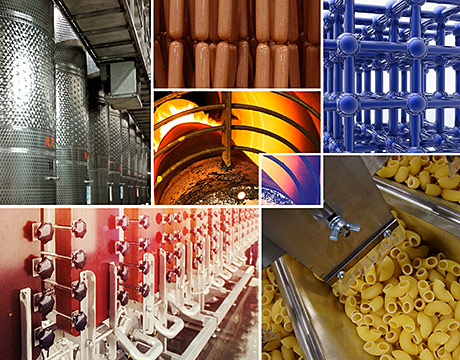Improving Drying Methods in Manufacturing
Improving Drying Methods in Manufacturing


The drying of moist, porous materials is one of the most energy-intensive processes in manufacturing. Current drying methods are inefficient, consuming large amounts of time and energy, and can mean longer production cycles and slower delivery of products. Industries that rely heavily on drying are food processing, paper, textiles, biopharmaceuticals, chemicals, and powders. Drying can also be a huge cost factor, for example, in the paper industry, where 30 percent of all energy consumed goes into drying. In addition, how complete the drying process is can greatly impact the quality of the final product.
Efforts in many foreign countries are well under way in improving efficiency and reducing the costs of their drying processes, which could put the U.S. at a competitive global disadvantage.
In recognition of these challenges, the National Science Foundation (NSF) has established the Center for Advanced Research in Drying (CARD) at Worcester Polytechnic Institute (WPI) in Worcester, MA. As a sponsored industry/university cooperative research center, its mission is to improve drying technologies and strengthen the U.S. manufacturing sector. The only major research center at an American university focused on industrial drying, CARD is also a partner among the U.S. National Network for Manufacturing Innovation Institutes and is a member of the Clean Energy Smart Manufacturing Innovation Institute.
“Our mission is to achieve transformative breakthroughs in drying technologies,” says Jamal Yagoobi, head of the mechanical engineering department at WPI and director of CARD. “Major innovations in drying, when commercialized, will positively affect production costs, process efficiency, energy sustainability, and product quality for U.S. manufacturing.”
Key Objectives
CARD has two main goals:
- Help U.S. manufacturing become environmentally sustainable by improving the energy efficiency of various drying and relevant heat/mass transfer processes
- Help U.S. manufacturing improve the quality of their corresponding products by understanding the interrelationship between drying and final product characteristics
The research areas will include:
- Drying conditions, processes, applications and techniques
- Optimizing product quality and energy consumption during drying by solving multi-scale transport model issues
- Novel use of nano- and micro-sensor technology in drying applications
- Innovative concepts in drying of moist porous material
- Moisture management for food quality, stability, and safety
- Phase behavior of biopolymers and impact on product quality
- Mechanical modeling and computer software tracking
- Product microstructure characterization
- No-phase-change dehydration schemes and other novel drying concepts
- Innovative impinging jets with and without chemical reactions for drying, heating, and cooling applications
- Energy auditing
An example of a research challenge is being able to take in situ measurements via unique sensors developed at CARD that help engineers understand how product temperature, moisture contact, and physical properties change during a given drying process.“Such information, coupled with the numerical models, will provide the foundation for the next-generation of innovative drying technologies,” Yagoobi says.
Saving Energy Key to Success
About 2 percent of the 100 quadrillion BTUs (or quads) of energy used each year in the U.S. is wasted by industrial drying processes. "The goal of CARD is to improve the efficiency of those processes by 10 percent, which would save 0.2 quads of energy each year," Yagoobi says. "Since steam is the prime media used in industrial heating and drying, making drying more efficient will also help reduce annual water usage in the United States by about 10 billion kilograms, or the equivalent of the water in 4,000 Olympic-sized swimming pools.”
CARD represents a consortium of nearly 200 academic, industry, and nonprofit partners that are eager to work together to achieving transformative breakthroughs in drying technologies. Direct transfer of these results to industry will enable more rapid adoption of new sustainable processes.
"In the short term, major innovations in this field, when commercialized, will positively affect production costs, process efficiency, energy sustainability, and product quality,” says Yagoobi. ”In the long run, the magnitude of these changes could very well foster a new era of U.S. manufacturing competitiveness and job creation."
Mark Crawford is an independent writer.





